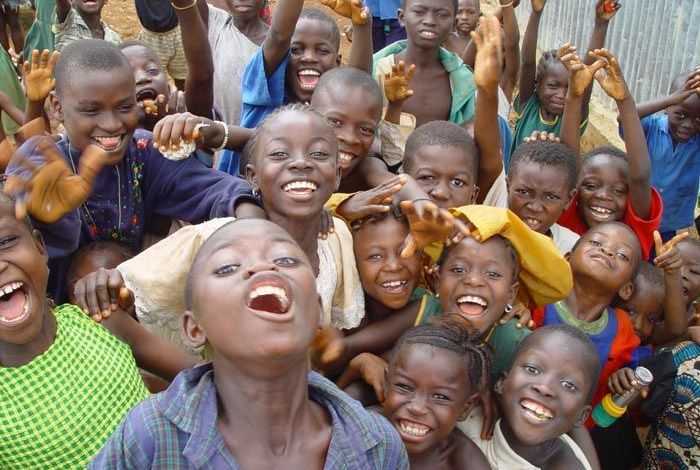International Children’s Day: the social vices impeding rights and development of children

World Children’s Day, established in 1954, is celebrated annually on 20 November to promote international togetherness and awareness among children worldwide and to improve children’s well-being and welfare.
Observed by the United Nations as a cultural and commercial day, it also commemorates the Declaration of the Rights of the Child by the UN General Assembly on 20 November 1959.
This year’s celebration, under the global theme “A Better Future for Every Child”, has shown that the call for leaders to listen to children’s ideas and demands is more important than ever.
The COVID-19 pandemic has shown how inequality affects the rights of every child. From climate change, education and mental health to ending racism and discrimination, children and young people are raising their voices on issues that matter to their generation and calling for adults to create a better future.
Pioneer role for Ghana
More than thirty years ago, following the adoption of the International Convention on the Rights of the Child by the United Nations on 5 February 1990, Ghana was the first country in the world to ratify the treaty, thus committing to integrate it into national law.
Despite the legal basis for protection of children’s rights and the progress made regarding infant mortality and education, significant obstacles still stand in the way of realising children’s rights.
According to the Children’s Rights Index, the hardship and difficulties faced by children in Ghana include slavery and forced labour, poverty, physical and psychological violence, sexual abuse, poor-quality education and harmful ancestral rites.
As shown in a 2013 UNICEF report, verbal, emotional and physical abuse in many forms is part of everyday life for many children in Ghana.
More than 57% of the children questioned for this study, aged between 14 and 17, said they were hit at home regularly or very often. And 34% testified to violence endured at school at the hands of teachers. The use of violence to educate and reprimand children is part of Ghana’s social norms.
Furthermore, this social phenomenon is institutionally reinforced by-laws, allowing for “reasonable” physical sanctions on children.
Sex abuse and street children
Sexual abuse of children is still common. A 2015 study showed that the prevalence of sex abuse among children was roughly 27% for girls and 11% for boys.
Unsurprisingly, girls are more likely to be sexually abused than boys. Abused children sometimes have great difficulty in disclosing their abuse to those around them for many reasons. Among these: a belief that they can handle the trauma on their own, the conviction that they must have wanted the abuse, the perception of abuse as routine, fear of being stigmatised or a feeling that they will be betrayed by friends revealing the abuse they have suffered.
In Northern Ghana, as in parts of other West Africa, ancient traditions and rituals have led to ritual killing of children. Many of the children murdered suffered from a disability. The practice of ritually killing them often stems from the belief that they are possessed by evil spirits which can bring bad luck to those around them.
Poverty, ignorance and the marginalisation of some communities are the underlying causes of this particular kind of abuse. Unfortunately, most of the murders go unreported or unrecorded, and so no one knows how many children die each year because of these obscure practices.
Children living on the streets are a common sight, especially in urban Ghana. According to a survey in 2001 by the Ghana Statistical Service, 80% of such children are aged between five and 14. Young as they are, street children must find work to meet their needs. Difficult living conditions on the streets and their lack of formal skills push many children into prostitution to survive.
Their precarious situation makes them particularly vulnerable to exploitation and trafficking.
Unsurprisingly, most of these children leave school prematurely, leading to an illiteracy rate among them of roughly 70%.
Accra, with over five million people, is the Ghanaian city with the most street children. The underlying causes that drive children into such precarious situations are: general rural flight, poverty in the family and environment-challenging economic conditions, which affect many of the areas from which such children come.
Health effects
In Ghana, one in five children under the age of five is stunted, and one in ten is underweight for his or her age. Two in three babies are at risk of being underdeveloped physically and neurologically because of undernourishment.
Malnutrition in young children can have devastating consequences for their development and lives – learning difficulties, weakened immune systems and a heightened risk of infection.
A significant decrease in the number of breastfed children and low dietary diversity are the main factors increasing malnutrition among young children.
Equally, neonatal mortality is increased by the risk of premature birth, infection and complications during and before childbirth. Despite the availability of antenatal care and attention from skilled midwives at health facilities during childbirth, newborn and maternal death rates in Ghana remain high.
Investing in the future
As Ghana joined the world to mark the day, Cecilia Abena Dapaah, the caretaker minister in charge of the Ministry of Gender, Children and Social Protection (MoGCSP), has called on stakeholders to support quality digital education for children.
She said embracing the power of digital solutions will help to transform learning and skills development for an entire generation of Ghanaian children.
In a speech read on her behalf at the Third Session of the Children’s Parliament, Mrs Dapaah said the COVID-19 pandemic proved the critical importance of digital knowledge and skills as the drivers of education and national development.
Ghana’s commemorations for World Children’s Day centred on the theme ”Investing in Our Future Means Investing in Our Children”.
Mrs Dapaah said that with the COVID outbreak Ghana faced by an urgent need to bridge the digital divide between rich and poor and boys and girls. She noted how Africa lags behind the rest of the world in digital knowhow and girls trail boys in accessing and using digital technology.
The minister said digital tools are essential for expanding digital skills access to remote areas and the most vulnerable. Hence the need to develop strategies to ensure that such skills are provided timeously and equitably, she said. They must also be matched by connectivity so that children can use them.
“It is the goal of the government to connect every child and school to the internet and provide new, digitally driven tools to help them develop skills to realise their potential,” Mrs Dapaah said.
She noted the government’s work to provide free education up to senior high school level, and well as radio and television broadcasts of model lessons. Education officials have also reached children in remote areas with learning tools and provided internet connectivity to many secondary schools, she said, and the government intends to expand internet access to primary schools.
Mrs Dapaah urged partners in the public and private sectors to support the government’s call to provide internet connectivity, online devices, affordable data and digital engagement of young people.
In a speech read on his behalf, Solomon Tesfamariam, the country director for Plan International Ghana, spoke of how the emergence of COVID-19, global warming and climate change had affected and continues to affect children in diverse ways.
He acknowledged the efforts of the government and other actors towards advancing the well-being, rights and equality of children.
A Facebook post by UNICEF to mark International Children’s Day said: “As the world continues to grapple with COVID-19, UNICEF is on the front line, helping to keep children and families healthy and safe in over 190 countries and territories.”
Ultimately, it will be futile to say we are concerned about children’s future and wait a decade or longer to take action.
The little steps of all stakeholders today must be taken with today’s child in mind, not only the unborn child.
Source: Asaase Radio




